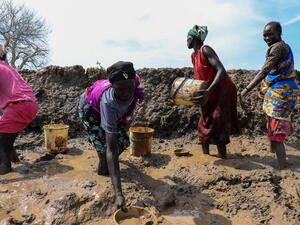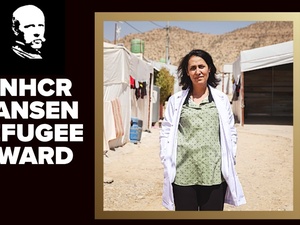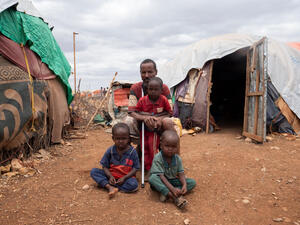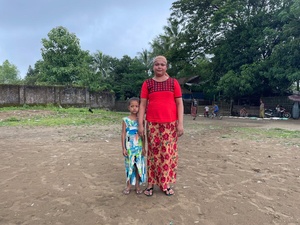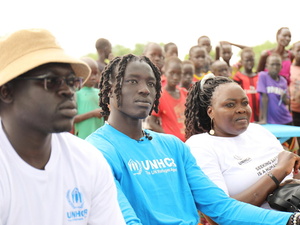Displacement in Democratic Republic of the Congo and region
Displacement in Democratic Republic of the Congo and region
As we feared, three internal displacement sites run by UNHCR near the town of Rutshuru in eastern Democratic Republic of the Congo (DRC) - Dumez, Nyongera and Kasasa - have been destroyed and emptied. We and our partners are now trying to determine the whereabouts of tens of thousands of internally displaced people (IDPs) from the camps in the Rutshuru area.
Our staff, as part of a UN interagency mission carrying medicine and water, travelled to Rutshuru yesterday. Since the fighting died down last week, this is the first time we have been given access into the territory north of Goma now controlled by the forces of Laurent Nkunda. Our priority is to assess the state of the camps and other makeshift IDP sites in the area and to establish the fate of some 50,000 people who were sheltered there until last week.
The internally displaced people from the camps around Rutshuru have reportedly fled north towards Nyamirima and Kanyabayonga and eastwards towards Ishasha in Uganda. Many have reportedly joined friends and relatives in nearby villages, while others have sought shelter in churches and public buildings. The mission continues to Dumez today to assess site and situation there.
Our staff has also reported that - en route to Rutshuru - they passed Kibumba, a makeshift site some 40 km north of Goma. They described the site as empty and destroyed, as if nothing had existed there before. The camp was a spontaneous site that housed at least 26,000 displaced persons, most of whom are now at Kibati camp north of Goma.
Meanwhile, refugees from the DRC continue to cross over to Uganda. Over the weekend, UNHCR teams in Ishasha received more than 1,000 refugees originating from the Rutshuru area in the DRC. The new arrivals immediately asked to be relocated to Nakivale refugee settlement, 350 km from the border.
The refugees told us they had been displaced for over two months from their villages and they finally decided to come to Uganda after the IDP camps where they were staying in the Rutshuru area were attacked. In total some 10,000 Congolese refugees have arrived in Uganda since the latest round of fighting erupted in late August.
At Kibati camp, which now has an estimated population of 65,000 people, UNHCR yesterday constructed the first of at least five large portable warehouses that will be used to provide temporary shelter to the newly displaced families. Many people are currently spending the hot and rainy days and cold nights in the open. By Monday evening, some 200 families were accommodated there. At least four more warehouses - loaned by WFP - are planned for construction in the coming days.
Fearing a possible cholera outbreak or typhus at Kibati UNHCR is in the process of distributing 100,000 bars of soap and 28,000 water jerry cans.
We are also rushing to deliver more aid to some 250,000 people displaced since the fighting escalated in August in North Kivu. In the six camps run by UNHCR around Goma, there are now 135,000 displaced people.
A UNHCR convoy carrying 33 tonnes of various aid items, including plastic sheeting, blankets, kitchen sets and jerry cans, is now on the way to Goma from our regional warehouse in Ngara, Tanzania. The trucks left Ngara late last week and are travelling via Burundi and Rwanda. They are expected in Goma today. We also have a warehouse in Goma with non-food items for distribution to the displaced.



